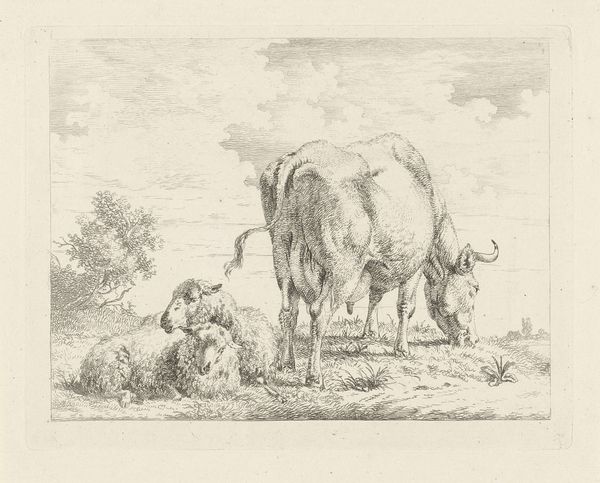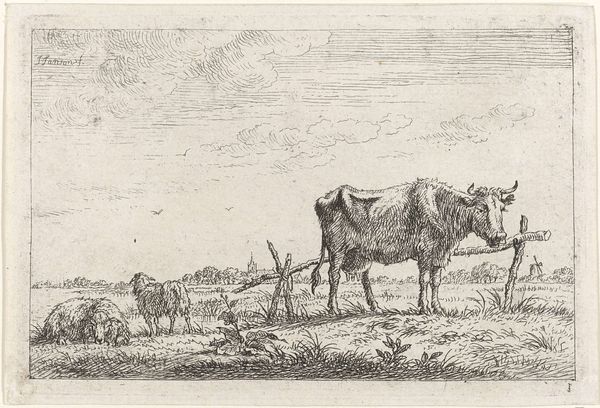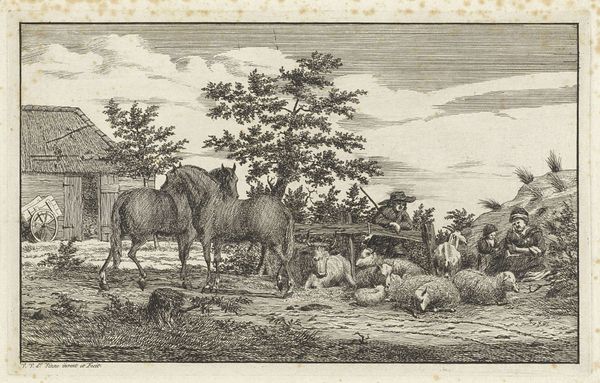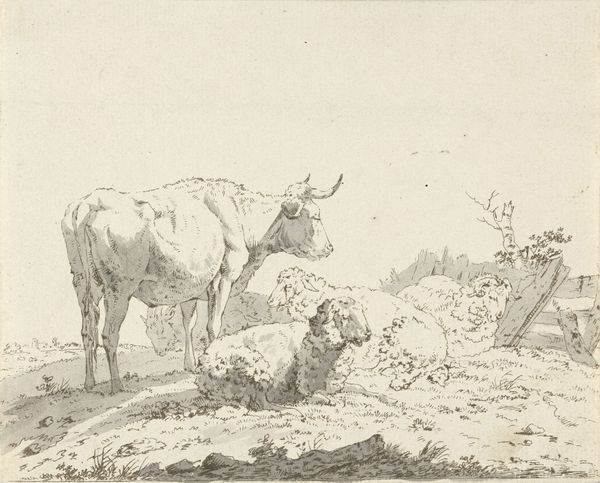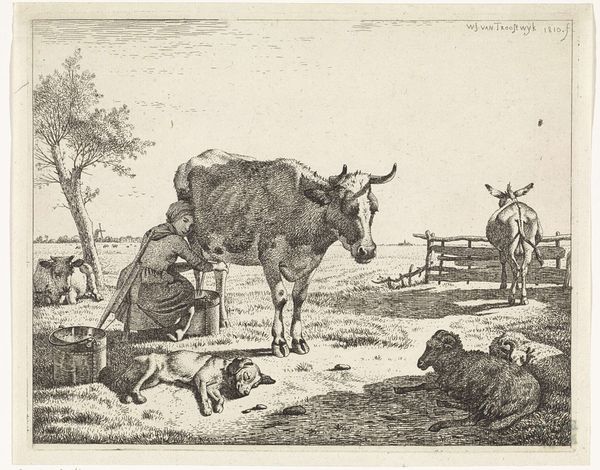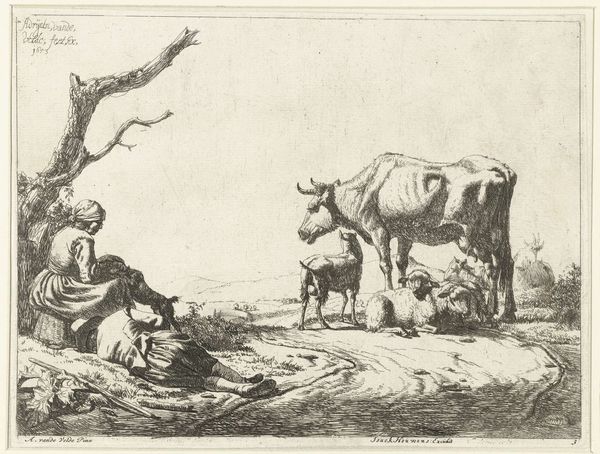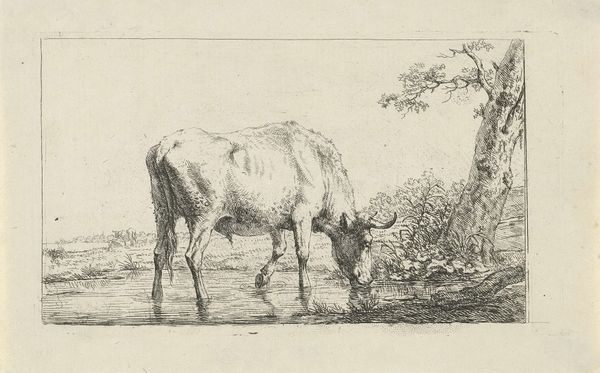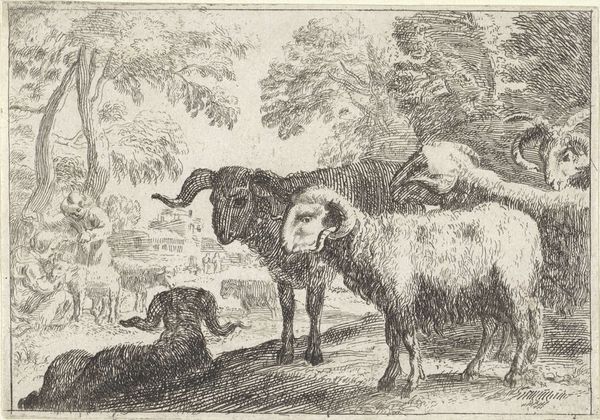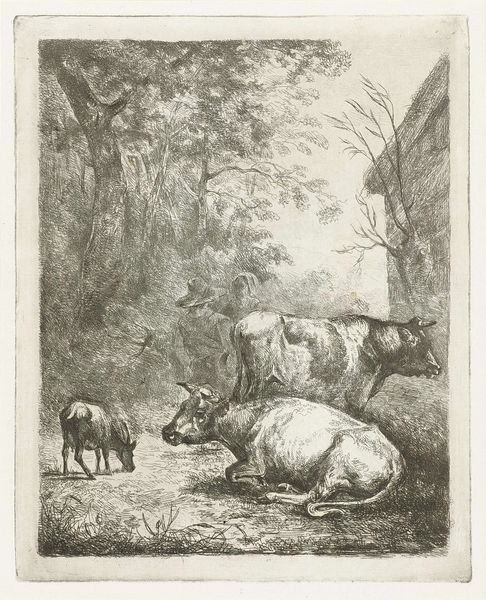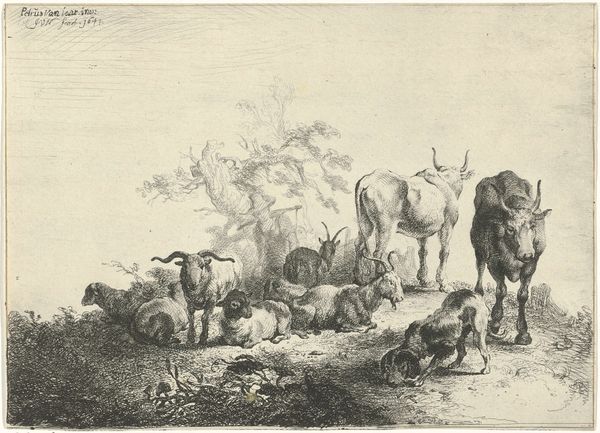
drawing, print, engraving
#
drawing
# print
#
landscape
#
romanticism
#
genre-painting
#
engraving
#
realism
Dimensions: height 138 mm, width 200 mm
Copyright: Rijks Museum: Open Domain
This image of two cows and a sheep was made by Frédéric Théodore Faber, in 1821. It’s an etching, a printmaking technique that relies on the corrosive power of acid. To make it, Faber would have first coated a metal plate with a waxy, acid-resistant substance, then scratched an image into that coating with a special needle to expose the metal beneath. Next, he would have submerged the plate in acid, which bit into the exposed lines, creating grooves. The longer the plate was in the acid, the deeper the lines would be. Finally, the plate would be inked, and then pressed onto paper to produce the print. Look closely, and you can see how Faber varied the density and weight of lines to create a sense of light and shadow, giving the composition depth. Printmaking in the early 19th century was a skilled, labour-intensive craft, and prints like this one played a vital role in disseminating images, making art more accessible to a wider audience. It’s a reminder that even seemingly simple images are the product of a complex interplay between materials, processes, and social context.
Comments
No comments
Be the first to comment and join the conversation on the ultimate creative platform.
